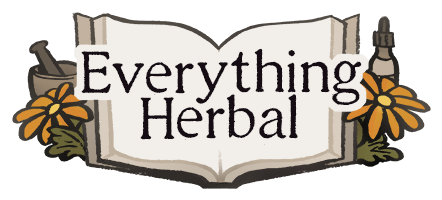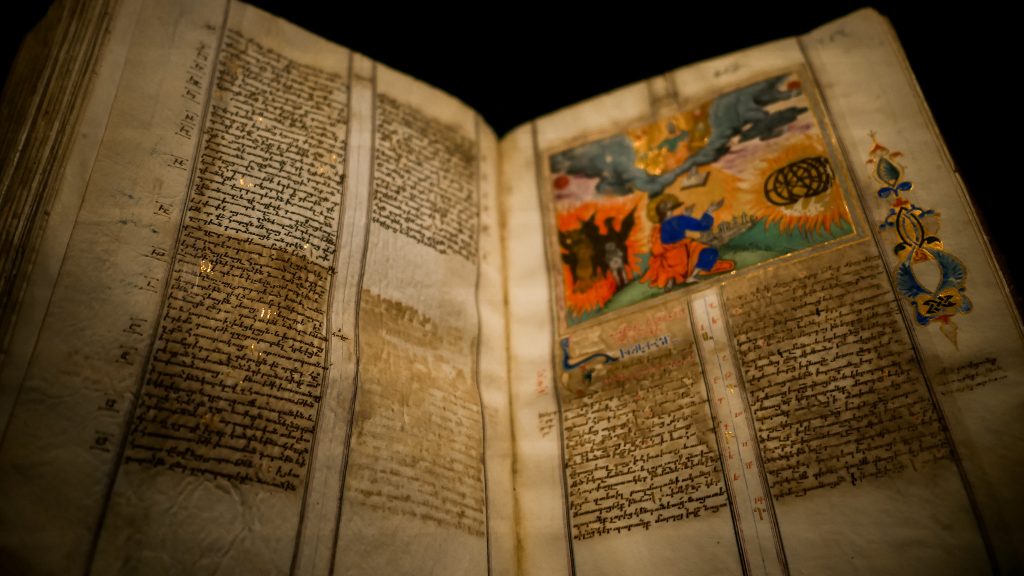The Love and Distrust of Herbal Medicine
The process of modernization can be described as the transformation of biophilia (the love of and communion with nature) into biophobia (the fear and distrust of nature). Industrialization and the commoditization of everyday life are only some of the more recent forces that cemented this change, which in reality reaches much further back into Ancient Greece and Rome, as can be see in the hegemonic Christianization of Pagan culture, or the decline of Greco-Roman polytheism.
The transformation from biophilia into biophobia should be of interest and concern for herbalists and practitioners of natural medicine generally, as it is the underpinning of the ideological foundation of the ideas that many today harbor towards non-pharmaceutical based healing traditions and practices. These contemporary attitudes which espouse, for example, the notion that plant based healing is dangerous, untrustworthy, ineffective, unscientific, etc., are part of a much larger fear of the wild that stems from a generations long process of alienation from nature. Herbalist and ethnobotanist Wolf-Dieter Storl discusses how the forest, once held to be a magical and paradisiacal realm of great mystery and grace, gradually became a place of fear and trepidation. Wild plants that once provided sustenance in the form of food and medicine to one’s ancestors came to be regarded as potential poisons that should not even be touched, let alone ingested. This distrust and abhorrence of nature is the essence of biophobia. Biophobia is a treacherous trap for the body, mind, soul and spirit that has been laid down alongside and in lock step with the deployment of the global machinery of industrial society and the shifts in human perception and spiritual life that lead to it.
Speaking to the legacy of biophobia in the Western world, Dieter Storl writes:
“Western people are scared of rabid foxes, and they are afraid to eat wild raspberries or blueberries – after all, they might be contaminated with fox tapeworm eggs. And there are ticks, which can cause Lyme disease and encephalitis if they bite you. The best solution is never to go into the forest! (Or you can do what many do when they go hiking, and march through the forest as if through enemy territory). When considered soberly, however, the fear of the forest reveals itself to be mere hysteria. The likelihood of catching rabies or tapeworm in the woods is less than the chance of being hit by a truck. The fear of the forest is the fear of one’s own soul, of the “evil witch,” of the shadows of one’s own personality.1”
The fear of the soul is often tied up with the repression of bodily feeling and somatization (any unconscious and nonvolitional process where physical symptoms are produced as a consequence of one’s ill-founded psycho-emotional attitudes and disposition). It is through the soul that we are capable of producing bonds of intimacy between self and world. The last century in particular has seen massive increases in the technical proficiency of machine technologies, but this has come at the cost of understanding the importance of nurturing the capacity to sense, feel into, and thereby be transformed by the natural world. When this capacity is diminished or lost, nature then becomes something that exists outside the boundaries of the self, something that indeed is thought to threaten the stable foundation and identity of the self. The felt sense of immediate experience, the communion with other-than-human life, is substituted for an abstract realm of thought governed by the separation and division of subject and object, self and other, inner experience and outer nature… When the awareness of “external” nature is repressed, then so too is our own bodily awareness.
Of Repression
There are few places where the legacy of this repression is reflected more strongly than in the transformation of agricultural work and attitudes towards the land. The great Goddess guided early farmers and agriculturalists through her gifts of vision, inspiration and dreams.2 It was understood by our ancestors not only that the Goddess stands as our protectress, but also that she sees, hears, feels, and mourns, that she is part and parcel of every aspect of our experience as living, breathing beings on planet Earth. The benevolence of the Goddess is what makes the soil fertile, and her guidance is what allowed agricultural societies to emerge and prosper. As Dieter Storl continues:
“Agriculture progressed in a continuous dialogue with her [Goddess Nature]. Plowing and tilling the soil were considered an act of love; impregnating Mother Earth was the religion, and those who impregnated her were the worshippers. In fact, the word cultivate originally meant nothing more than service to the gods, honor, sacrifice, and nurturing.”3
A far cry from the Round Up drenched, monocropped fields of contemporary agricultural production.
Of Forgetting
The forgetting of the benevolence of the Goddess should be thought of in relation to the demonization of the Pagan Gods, Ancient Greece and Rome more generally. This was a development that, as noted above, was ushered into being through the proliferation and enforcement of domineering strains of Christianity. We can see this quite clearly in the gradually shifting attitudes and attributes bestowed upon Greek and Roman tutelary deities (i.e. guardian, patron, and protector spirits). Faunus, to take but one example, was the ancient Roman God of the forest, plains and fields, the guide and protector of shepherds, huntsmen and all inhabitants of the countryside. He was a great companion of the nymphs, the feminine nature deities who populated and cared for the myriad creatures of the Earth and presided over the diverse phenomena of nature, from springs and waterfalls to clouds, trees, caverns and meadows. Faunus played a great role in the fertility cults of the ancients, and was honored as an important overseer of both agricultural production and the health of the forest, as well as (in his form or aspect as the God Innus) the primal embodiment of human sexuality and procreative powers.
Faunus was depicted as a voluptuous and sensual being and, in some traditions where he was held to be synonymous with the Greek God Pan, as the inventor of the flute, whose music charmed wild animals and appeased the spirits of nature. Faunus was one of the favourite and most honored Gods of the Romans, as Pan was for the Greeks. Innumerable shrines and monuments in honour of Faunus/Pan were placed throughout the countryside and in wild places. And it was perhaps for this very reason, that of the immense popularity of Faunus and of Pan, that Christian theologians felt it incumbent upon themselves to cast these most beloved of Gods into disrepute, striking fear in the hearts of their worshipers and devotes with the threat of the eternal damnation of the soul.4
Of Demons and Angels
In the Greek translation of the Old Testament, the Septuagint, ‘good’ spirits are described as angels (ángelos, ἄγγελος “messenger”) and ‘evil’ spirits as demons (daimónia, δαιμόνια). This dichotomy of good and evil was foreign to the Greek notion of a daimon, which simply meant “godlike”, “power” or “fate”. Daimons were originally held to be benevolent and benign deities who oversaw the rightful and just fulfillment of fate and destiny, not as less than divine or malicious spirits who corrupted human nature and condemned souls to hell.
Faunus and Pan thus became nightmare demons. Where they were once the bestower of prophetic dreams, they became the harbinger of fearful illusions and malefic hallucinations. Where they once stood as one of the principal life-givers and protectors of the forest, they became the embodiment of the ‘dark’ side of nature, of that which needed to be kept at bay. The Greeks came to see those who suffered from epilepsy, for example, as being possessed by Pan (for the Greeks and Romans alike, epilepsy and madness were very closely related; epilepsy was thought to be the precursor to madness).5 The Romans ascribed a series of afflictions to an incubus by the name of Faunus ficarius, including “emaciation, violent unrest at night, and agonizing pains.”6
Of Written Word
Textual tradition, and the power and authority that came with it, also played a great role in the transformation of medicine from an ancestral, folk tradition of healing to something that was overseen and governed by the men of letters (the state licensed Doctors). In his book The Social Transformation of American Medicine, Paul Starr describes the folk healing traditions of the early American settlers, that the Doctors were later to chastise and condemn, in the following way:
“The family, as the center of social and economic life in early American society, was the natural locus of most care of the sick. Women were expected to deal with illness in the home and to keep a stock of remedies on hand; in the fall, they put away medicinal herbs as they stored preserves. Care of the sick was part of the domestic economy for which the wife assumed responsibility. She would call on networks of kin and community for advice and assistance when illness struck, in worrisome cases perhaps bringing in an older woman who had a reputation for skill with the sick.7“
Many of these women, who carried out the traditions of their ancestors in supporting and upholding the life and health of their communities, were to be persecuted as witches. The folk medicine that they worked to maintain came to be held up as heresy.
The state licensed doctors were as ignorant of the virtues of traditional healing systems as were the Inquisitor’s of the marvelous virtues of the Pagan gods that they sought to demonize. The doctors were able to remove the popular healers with great urgency by falsely casting them as witches who perpetuated evil and misfortune, just as the Inquisitors were able to divorce the Pagans from their animistic immersion in the world through the introduction of the dichotomy of good and evil and the threat of eternal damnation.8
Of Understanding
To understand the state of traditional medicine and the folk healing arts today, and why such traditions have been cast in such a negative light, it is important to understand the conquest of nature that began far back in the ancient world. Such conquest served to gradually divorce humankind from the experience of the living world in its pure immediacy. But the repressed always returns, and the living memory of health and harmony is again today finding its rightful place in the hearts of many.
Footnotes:
1 Wolf-Dieter Storl. Witchcraft Medicine. Vermont: Inner Traditions, 2003. Pg. 2-3.
2 When one looks, for example, to one of the earliest known sculptural representations of the face, the approximately 25,000 year old figure of The Venus of Brassempouy, it becomes abundantly clear how deeply rooted in the ancient past is the worship and devotion to the Goddess as the bestower and protector of life.
3 Ibid, pg. 3.
4 Not all Christians, however, were opposed to Pagan ideals. There was in fact a tradition of associating Faunus/Pan with Christ himself. Both Faunus/Pan and Christ were shepherds. Neither were entirely divine, Jesus Christ being simultaneously divine and human and Faunus/Pan was likewise a God as well as an earthly being, in part due to his very close and intimate association with humankind. Given this fusion of human/divine characteristics in both the figures of Faunus/Pan and Jesus Christ, some later Christian poets, including most notably John Milton, described Faunus/Pan as a pagan prefiguration of Jesus Christ. Such prefigurations were generated by poets who lived mostly after the Reformation period, and not by priests, bishops, or popes, or those were behind the bloody conquests and inquisitions of the ancient world.
5 Marten Stol. Epilepsy in Babylonia. Groningen: STYX Publications, 1993. Pg. 49.
6 Wilhelm Heinrich Roscher. Pan and the Nightmare. New York: Spring Publications, 1990. Pg. 65.
7 Paul Starr. The Social Transformation of American Medicine. New York: Basic Books, 1982. Pg. 32.
8 For more on this, one can consult the work of the the American anarchist historian and activist Fredy Perlman, who describes the conquest of the doctors in the following vivid language: “The so-called witches, heiresses to the informally transmitted knowledge of herbs and illnesses, are known to be healers, whereas the Doctors, notoriously ignorant of all this lore, are intent on establishing a State-licensed monopoly over illness so as to police the sick. The Doctors will eventually appropriate some of the herbal knowledge of the exterminated witches, but the healing will always be incidental to the policing. They will persecute illnesses even if they have to turn human beings to vegetables or cut them to shreds… Leviathan’s licensed agents even move to expropriate radical visionaries of their memory of human freedom, kinship and community. State-licensed visionaries, Masters and Doctors of Letters, Philosophy and Metaphysics, send their tentacles probing among the last traces of memory’s remembered humanity. The lettered Doctors appropriate the witches’ healing arts.” Fredy Perlman. Against His-Story, Against Leviathan!. Detroit: Black and Red, 1983. Pg. 238.
Photos by Serena Mor
Victor Cirone
I am a Clinical Herbalist (RH, OHA) and Registered Homeopath (HOM DSHM, College of Homeopaths of Ontario). I practice Herbal medicine and Homeopathy because of the immense transformative powers that these modalities contain – both on individual and collective levels of experience. In addition to holistic medicine, I have deep and abiding interests in Anthroposophy, Psychoanalysis, and Depth Psychology.
Subscribe to Blog via Email





